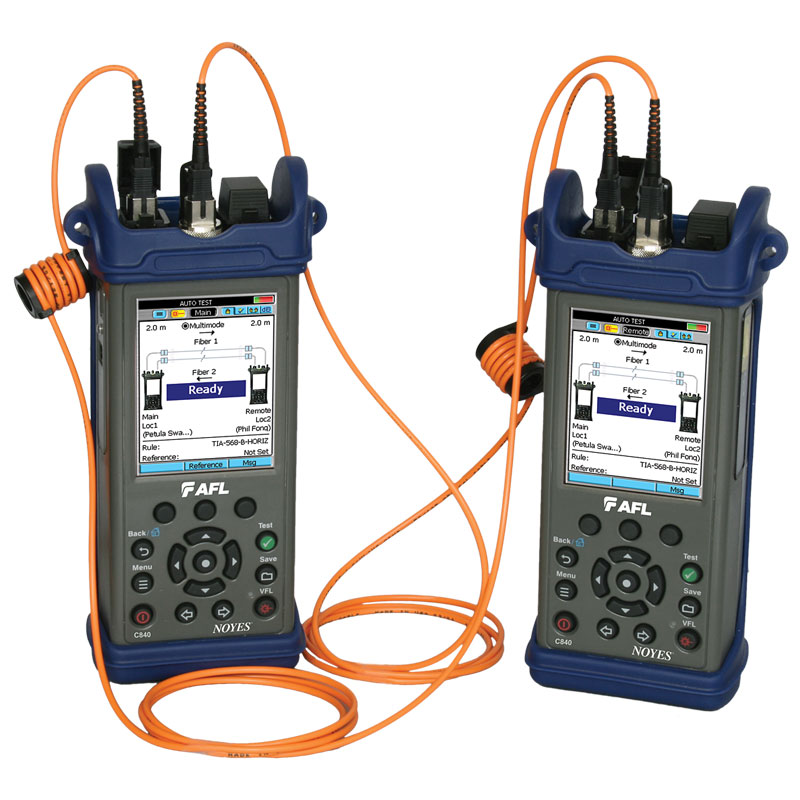Industries depend on fibre testing equipment to verify product standards.
Industries depend on fibre testing equipment to verify product standards.
Blog Article
Discover the Relevance of Optical Fiber Screening in Modern Telecom
In the realm of contemporary telecoms, the value of optical fibre screening can not be overemphasized, as it serves as the foundation for making sure network integrity and efficiency. What are the particular advantages that normal screening offers, and just how might it shape the future landscape of telecommunications?

Understanding Optical Fibre Testing
Optical fiber screening is a critical process in telecommunications that ensures the honesty and performance of fiber optic networks. This testing includes a series of treatments developed to examine the physical and useful characteristics of optical fibres - ofda. Secret criteria analyzed include optical power loss, bandwidth ability, and fault location, which are necessary for keeping high-grade communication links
The testing procedure normally entails the use of specific tools such as Optical Time-Domain Reflectometers (OTDR) and Optical Power Meters. OTDRs are used to recognize and characterize mistakes, splices, and connectors within the fibre, while power meters measure the transmitted light signal toughness to determine performance.
Moreover, screening is performed at various stages, including during setup, maintenance, and troubleshooting, to make certain that the network meets sector requirements and operational needs. Compliance with requirements established by organizations like the International Telecommunication Union (ITU) and the Telecoms Market Association (TIA) is critical.
Advantages of Normal Evaluating
Routine screening of optical fibers returns many advantages that considerably improve network dependability and efficiency. Among the primary advantages is the very early discovery of prospective issues, such as breaks or deterioration in the fibre, which can lead to pricey downtime if left unaddressed (optical fibre testing equipment). By recognizing these problems proactively, telecommunications carriers can decrease solution interruptions and guarantee constant connectivity for their clients
Additionally, routine screening helps to maintain the integrity of signal top quality. As optical fibers age, their performance can be affected by aspects such as environmental problems and physical tension. Routine assessments enable for the monitoring of signal loss and overall transmission efficiency, ensuring that the network runs at optimum levels.
An additional substantial benefit is conformity with market standards. Normal screening sustains adherence to regulatory requirements, therefore minimizing legal and financial threats connected with non-compliance. It enhances the general lifespan of the fibre framework by assisting in timely upkeep and repairs.

Common Evaluating Techniques
Checking optical fibers utilizes different techniques to make sure the honesty and efficiency of telecommunications networks. Among the most typical methods is Optical Time Domain Reflectometry (OTDR), which evaluates the entire size of the fiber by sending out a pulse of light and gauging the representations triggered by flaws or breaks. This method offers detailed details about the place and seriousness of faults.
One more widespread method is the use of Optical Power Meters, which gauge the amount of light transmitted through the fiber. This method assists determine the loss of signal stamina, making certain that it satisfies market criteria. In Addition, Visual Fault Locators (VFL) are used to recognize breaks or severe bends in the fibre by projecting a visible laser light right into the cord.
Insertion loss testing is also critical, as it evaluates the loss of signal power resulting from connections and splices within the network. In addition, using Polarization Mode Dispersion (PMD) screening examines the effect of fibre characteristics on signal integrity.
Each of these techniques plays a vital function in preserving the performance and reliability of optical fibre networks, inevitably contributing to seamless telecoms operations.
Effect on Network Performance
The honesty and performance of optical fibre networks directly affect general network performance. In modern telecoms, the effectiveness of data transmission counts heavily on the top quality of the optical fibres utilized. Any kind of deterioration in the fiber's problem-- whether due to physical damage, contamination, or too much flexing-- can result in increased attenuation and signal loss, substantially impacting information stability and speed.
Normal optical fibre screening is important to recognize and rectify potential concerns prior to they show up as network failings or downturns. Methods such as Optical Time Domain Reflectometry (OTDR) and insertion loss screening enable specialists to measure the performance of fibre web links properly. These tests not just evaluate the physical condition of the fibers however additionally make read review certain conformity with sector requirements, consequently guarding the network's reliability.
Moreover, a well-kept optical fiber more network adds to lowered operational costs and enhanced consumer complete satisfaction, as end-users experience less disruptions and greater information rates. Eventually, the emphasis on strenuous optical fibre testing practices functions as a keystone for maintaining durable telecoms framework, making certain that solution companies can satisfy the expanding demands for data transfer and connectivity in today's electronic age.
Future Fads in Examining
As we look ahead, developments in innovation are positioned to improve optical fibre screening in telecoms. The rise of automation and expert system (AI) is anticipated to enhance the performance and precision of testing procedures. Automated testing systems can conduct detailed evaluations with minimal human intervention, substantially decreasing the capacity for errors and speeding up time-to-deployment.
Furthermore, the assimilation of artificial intelligence formulas will enable anticipating maintenance, permitting network providers to anticipate possible concerns prior to they rise into failures. This proactive approach not only enhances network reliability but additionally maximizes functional prices.
Another arising fad is the development of portable screening tools that use real-time analysis - robotic vision. These tools will encourage service technicians to carry out on-site diagnostics swiftly, helping with quicker resolutions and enhancing solution quality
The growth of 5G networks even more demands the advancement of screening techniques. As transmission capacity demands increase, typical testing techniques may no more suffice. Cutting-edge options such as optical time-domain reflectometry (OTDR) and advanced spectral analysis will end up being important in making sure the honesty and efficiency of high-speed links.

Verdict
Finally, optical fibre screening is necessary for making sure the honesty and dependability of contemporary telecommunications networks. Regular testing techniques not just help identify possible problems such as signal loss and mistakes but likewise add to enhanced network efficiency and customer complete satisfaction. As the need Web Site for smooth connectivity proceeds to grow, the fostering of innovative screening approaches will certainly play an important duty in keeping top notch network criteria and supporting the developing landscape of telecoms.
Report this page